Check out this amazing mid-century home! It’s totally unique. Once upon a time, it used to be the talk of the town, but sadly, it fell into disrepair and was forgotten. Luckily, after years of neglect, someone came along, fixed it up, and turned it into a beautiful home for a family.
You’ve got to see the transformation to believe it! Click or scroll to take a look inside…
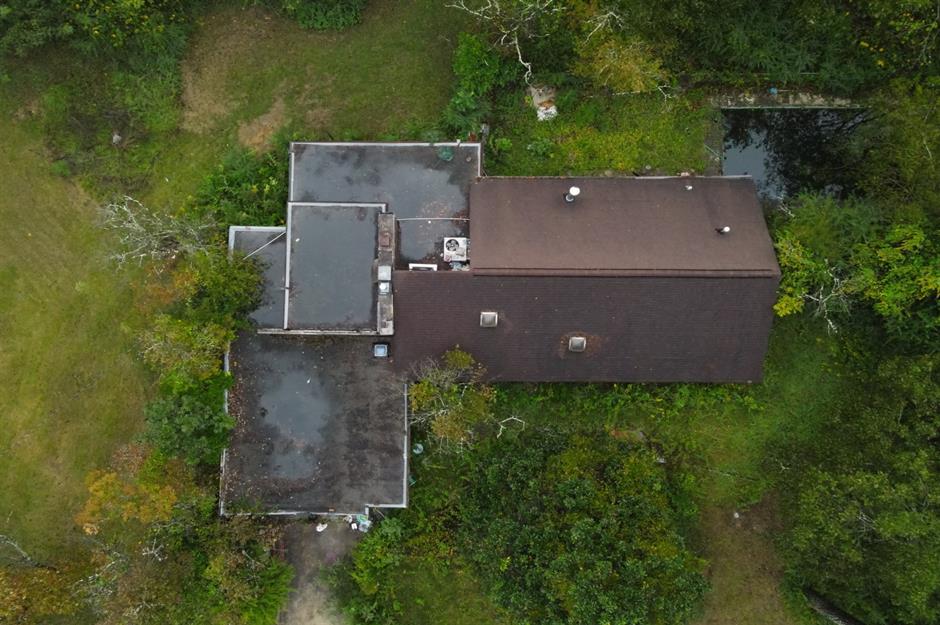
Back in 1960, the renowned architect John Randal McDonald, who liked to call himself an “Architect with a capital A,” designed this house. Covered in thick vegetation, it was discovered by photographer Leland Kent of Abandoned Southeast. McDonald, born in Milwaukee in 1922, served in the US Navy during World War II before diving into architecture. He had a knack for blending his designs with the natural surroundings, often using natural materials.
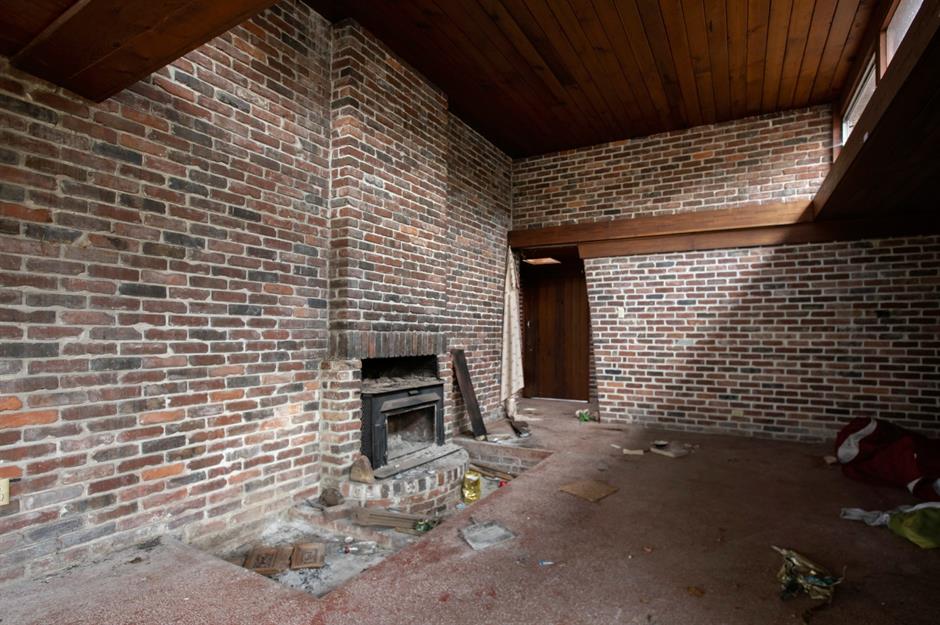
McDonald’s designs were sought after worldwide, and he even shared his ideas in New Homes Guide magazine. Because of his popular style, he expanded his business, earning him the nickname “poor man’s Wright” for his affordable yet stylish homes, reminiscent of Frank Lloyd Wright’s work.
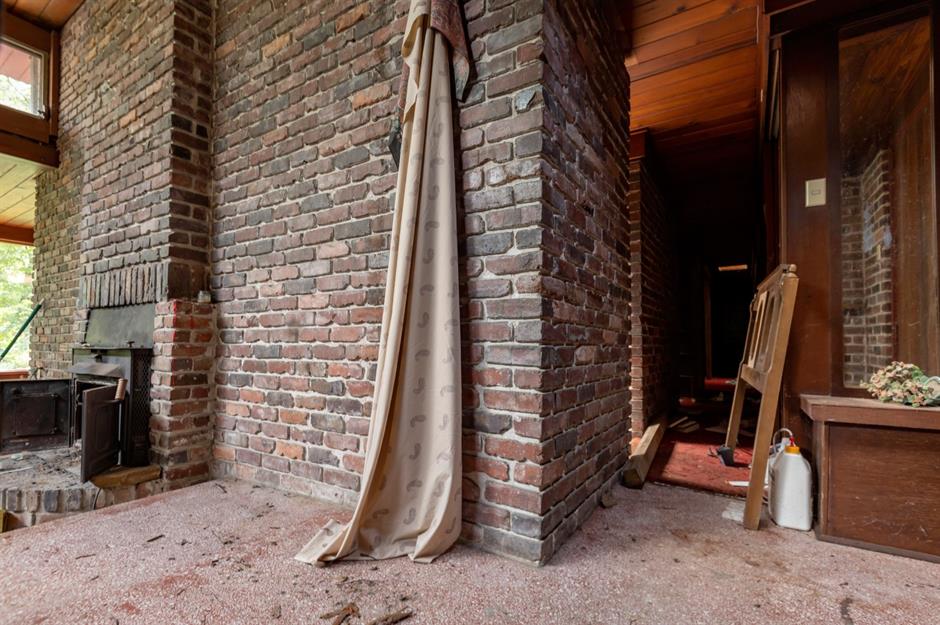
This particular house in Alabama, the only one McDonald designed there, was caught on camera in a sorry state before its makeover. Despite the dust and debris, you could still see the potential, especially in rooms like this one, with its high windows and exposed brick.
Apart from this Alabama gem, McDonald also crafted homes for numerous celebrities, including Bjorn Borg, Perry Como, James Garner, and Maureen O’Hara. Sadly, after its last owner passed away, the house sat empty for years, slowly falling apart.
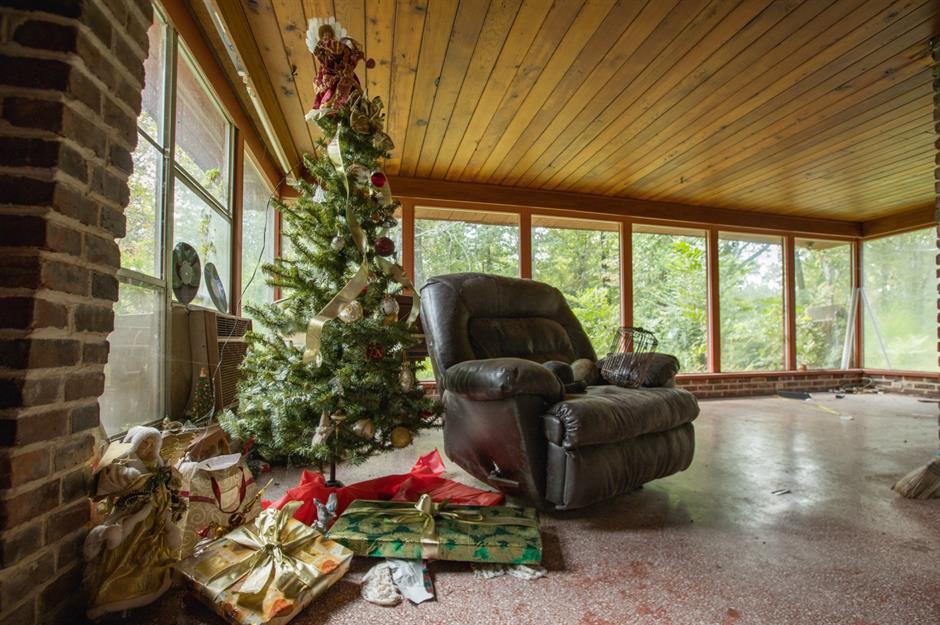
But in early 2021, local investors recognized its value and decided to restore it to its former glory. Some parts of the house were better preserved than others, like this corner of the main living area, where it almost feels like time stood still, with a Christmas scene frozen in time.
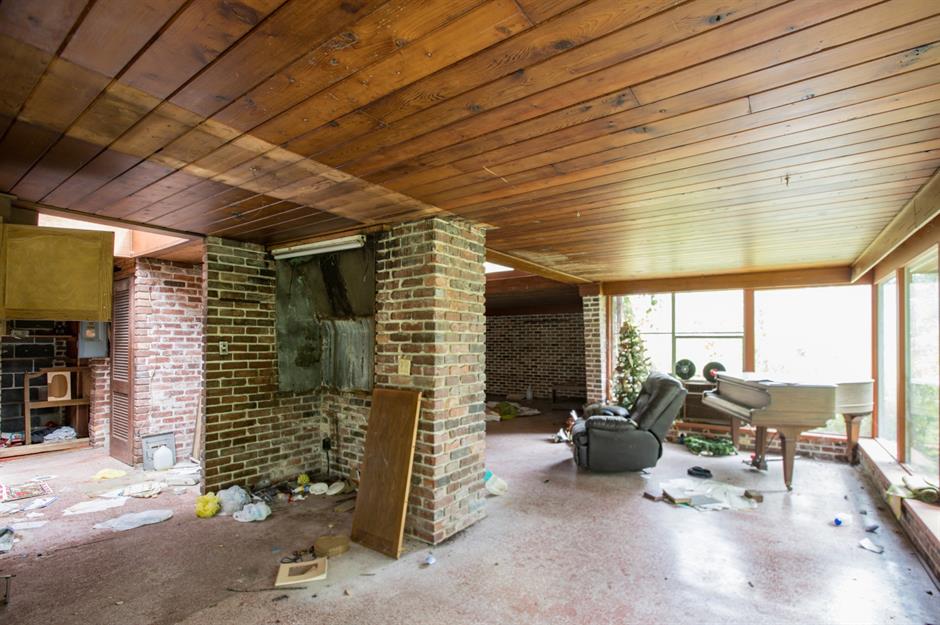
Like many of his affordable designs, McDonald focused on creating relaxed living spaces. This house offers an open-plan layout where the living room, dining area, and kitchen flow seamlessly together, creating a spacious and welcoming atmosphere.
When McDonald passed away suddenly in 2003, his final apprentice, Tom Bloczynski, took over to complete his unfinished projects.
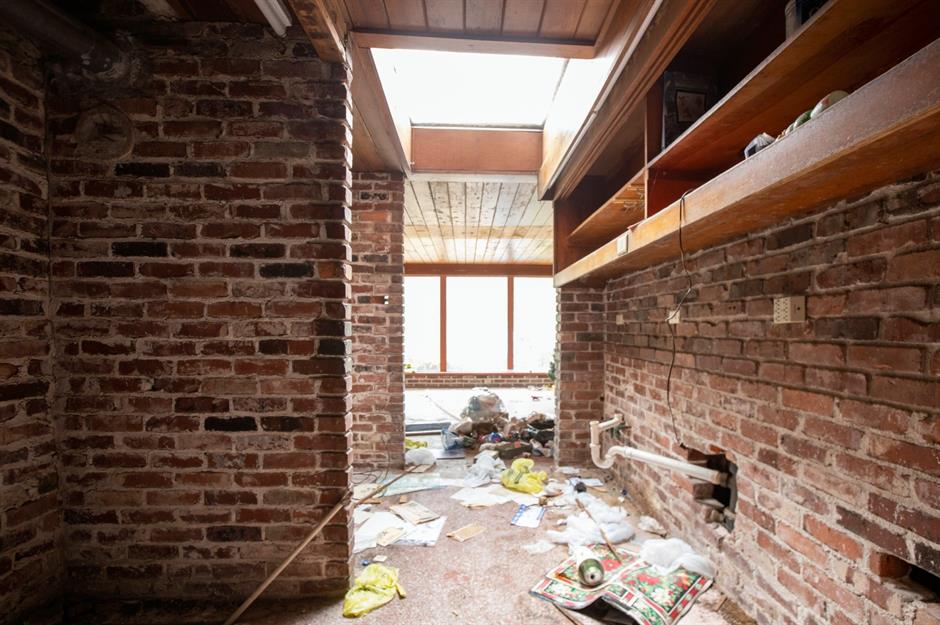
Throughout the property, you’ll find exposed natural materials and terrazzo floors, a signature of McDonald’s style. He had a knack for bringing the outdoors inside, evident in the wood-clad ceiling and skylights that bathe the living areas in sunlight and offer glimpses of the surrounding countryside.
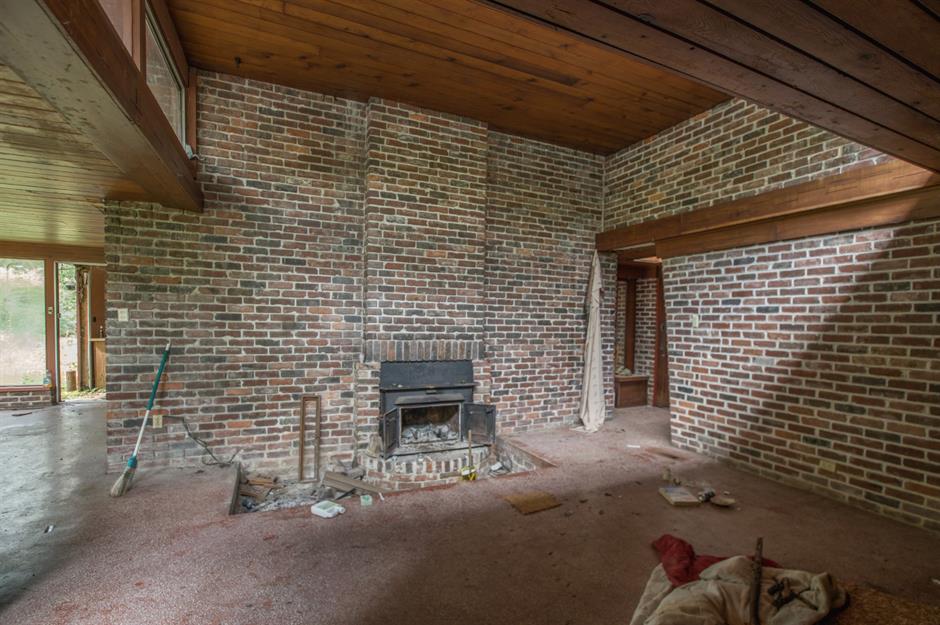
The house boasts a range of unique features, including a partially flat roof and narrow hallways. McDonald eschewed overhead ceiling lights to let natural light shine, and the living space even includes a distinctive sunken fireplace for cozy evenings.

With floor-to-ceiling windows throughout, the boundary between indoors and outdoors blurs, enhancing the feeling of space. The home encompasses nearly 2,000 square feet and includes an open living area, two bedrooms, two bathrooms, a den, a walk-in closet, and a pantry.
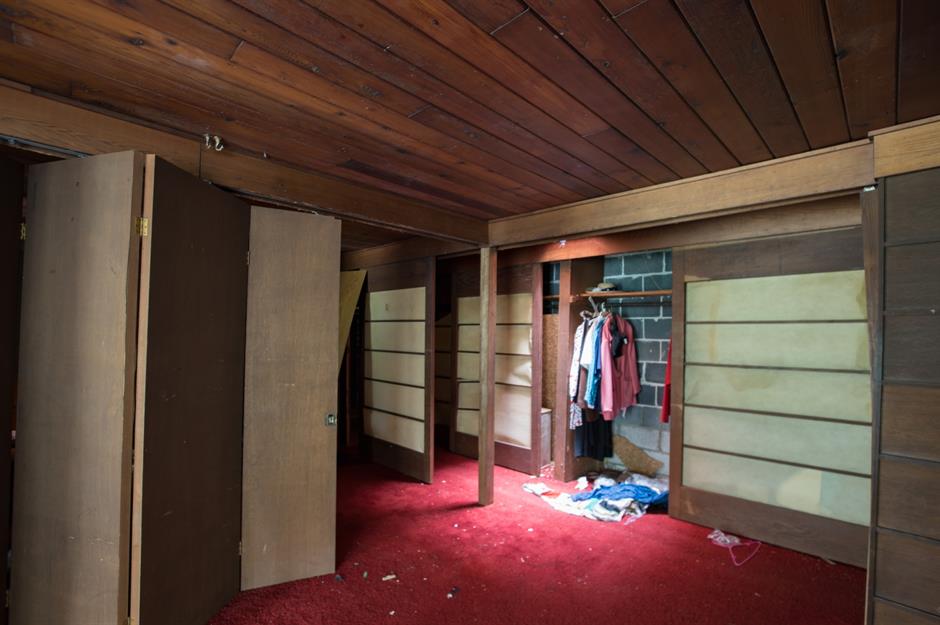
The master bedroom originally featured sliding doors leading to the porch on one side and a walk-in closet on the other. Meanwhile, the smaller children’s bedroom, nestled in the center of the house, cleverly utilized a folding door to create distinct sleeping and play areas.
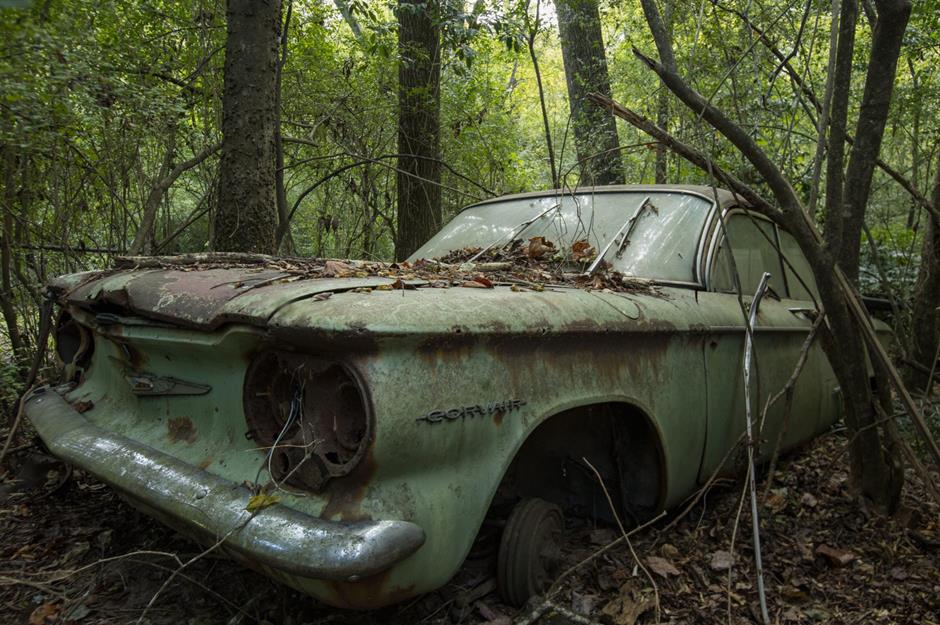
But the neglect didn’t stop at the house itself. In the backyard, hidden beneath layers of leaves and rust, lay a 1960s Chevrolet Corvair, once owned by the previous homeowner, seemingly forgotten in the woods.

Nearby, a coveted inground swimming pool awaited, though it had likely accumulated its fair share of leaves over the years. Did the pool survive the renovation?
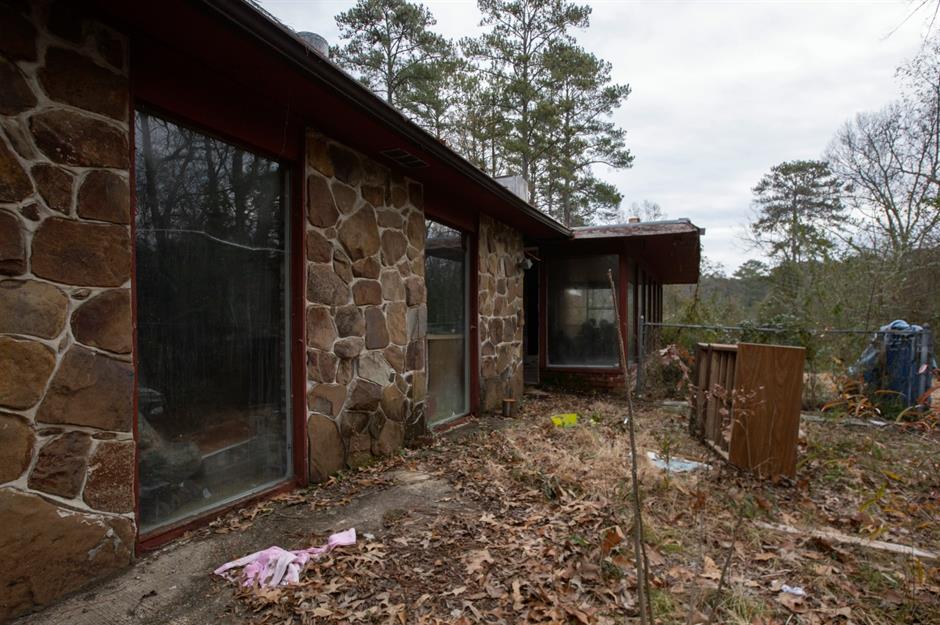
After the passing of the last property owner, the McDonald house remained empty for many years until March 2021, when local investors recognized its potential and embarked on renovations.
Let’s take a peek inside the newly refurbished home…
RECOMMENDED: Abandoned Deep South Home Untouched For 40 Years
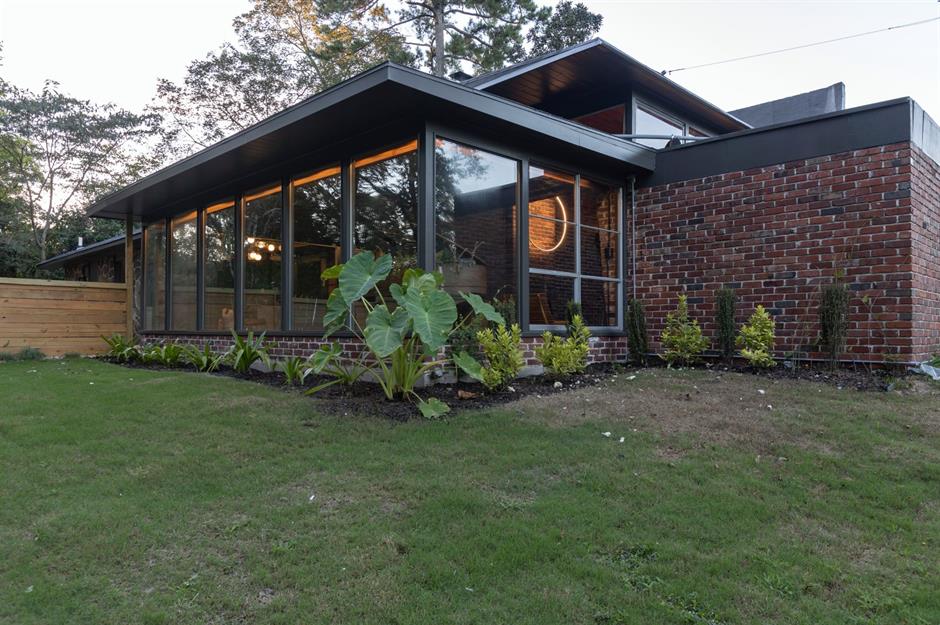
In just a few months, this mid-century home has undergone a remarkable transformation. With careful attention to detail, the property has been completely renovated while honoring the architect’s original vision.
The exterior now gleams with restored window panes and a well-tended lawn, a testament to the meticulous restoration process.
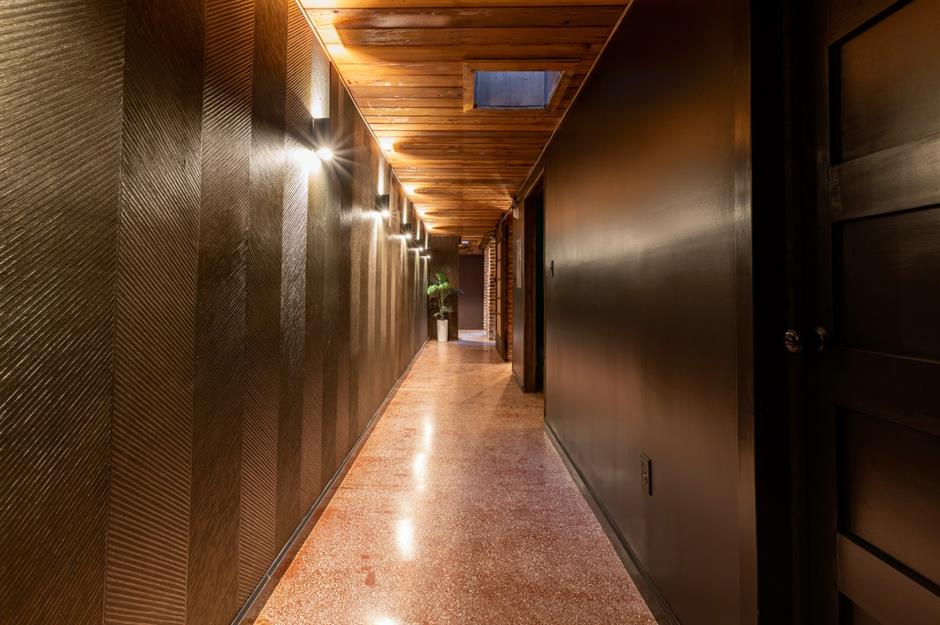
Inside, the home’s unique narrow hallways remain, and the terrazzo floors and wood-paneled ceilings have been seamlessly integrated into the stylish new interior, preserving the original charm and design.

According to Zillow, the entire property has been brought up to 2019 energy codes, boasting updated bathrooms, electrical wiring, plumbing, and even a new septic tank.
In one cozy corner, a portion of the original exposed brickwork has been retained, complemented by a sleek, modern wood-burning stove.
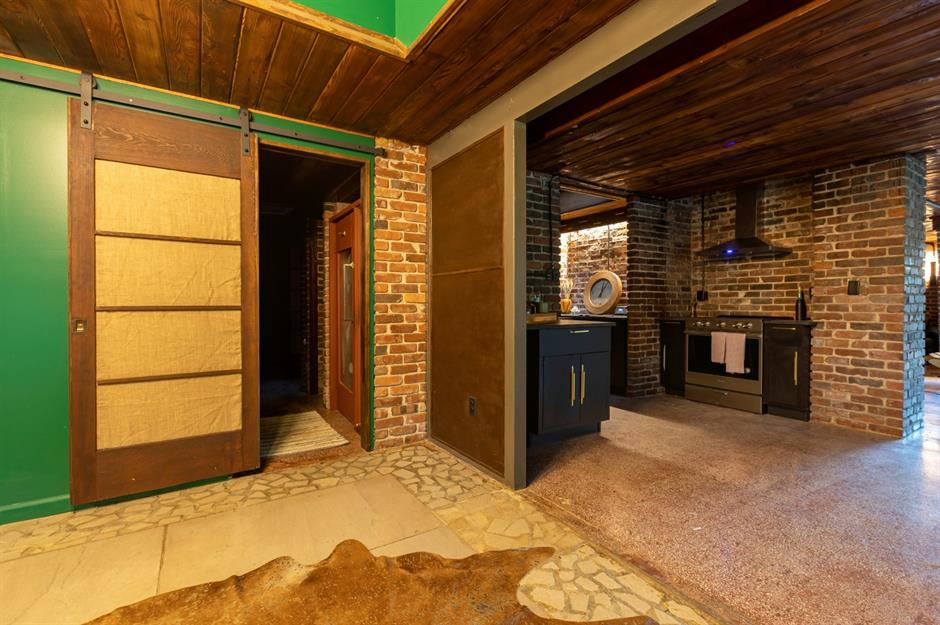
The sliding screen doors between the living spaces have been lovingly restored, serving as a distinctive feature that allows for flexible room configurations.
Meanwhile, the galley-style kitchen has been modernized with new appliances and chic dark cabinetry, blending functionality with contemporary style.
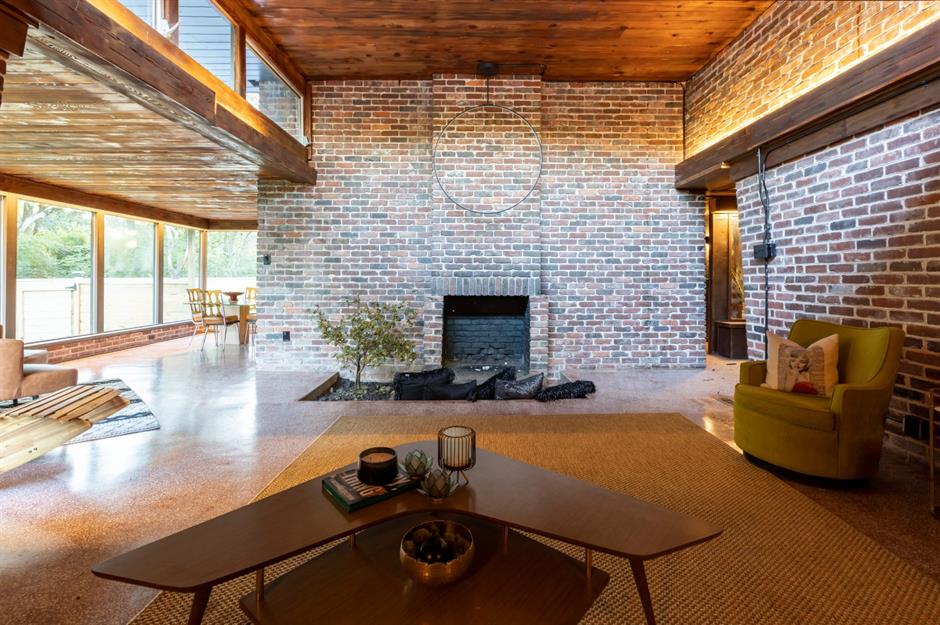
The original sunken fireplace takes center stage in the spacious and bright living area, surrounded by inviting seating adorned with plush cushions for cozy fireside evenings.
The furnishings throughout the home are inspired by mid-century design, featuring clean lines that complement the architecture and pay homage to the home’s origins.
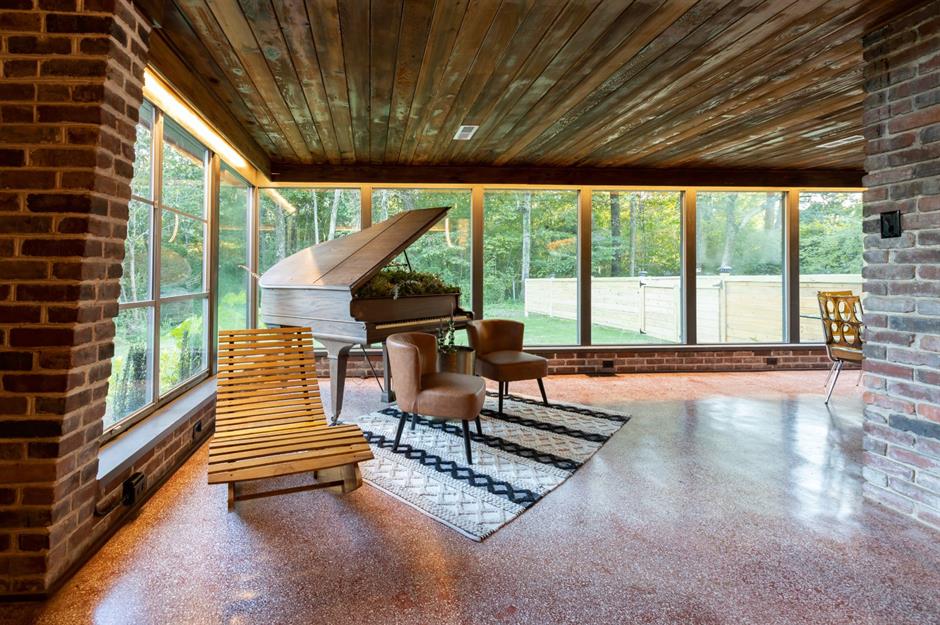
Where once stood a neglected corner with a Christmas tree and piano, now sits a stunning baby grand piano in rich dark wood, blending seamlessly with the interior decor. Adorned with foliage that mirrors the lush greenery outside, it serves as a striking centerpiece that honors the property’s organic design roots.
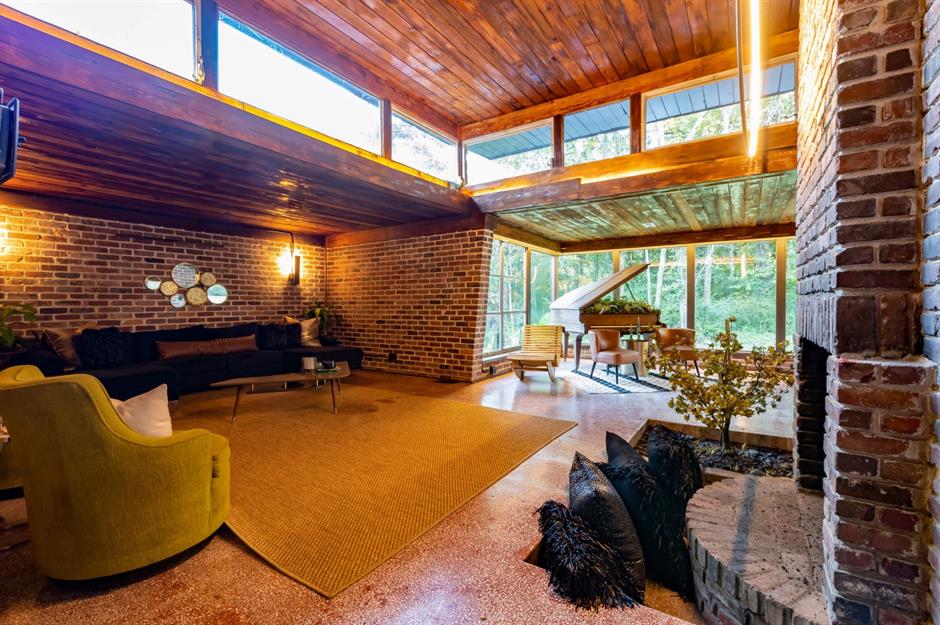
In the open-plan living area, the original skylights and expansive floor-to-ceiling windows remain, flooding the space with natural light and preserving the airy ambiance of the original design. Instead of traditional ceiling lights, strip lighting beneath the clerestory windows enhances the natural light without feeling artificial, staying true to the architect’s vision.
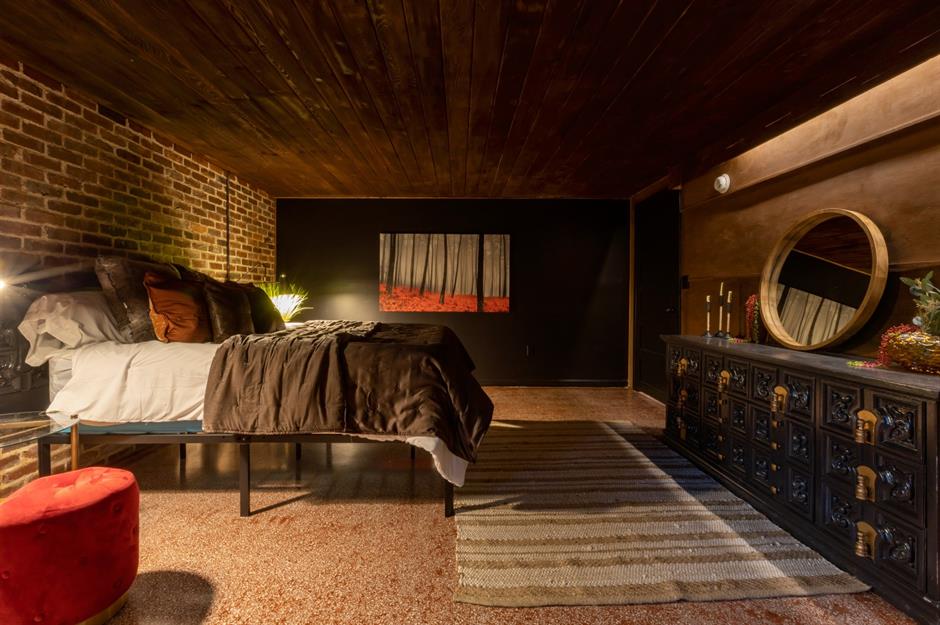
In one of the bedrooms, sliding doors maintain the division of space, while the exposed brickwork, wooden ceiling, and terrazzo floors are beautifully preserved. Thoughtfully placed downlights and table lamps create ambiance without the need for a central light fixture, maintaining the room’s cozy atmosphere.
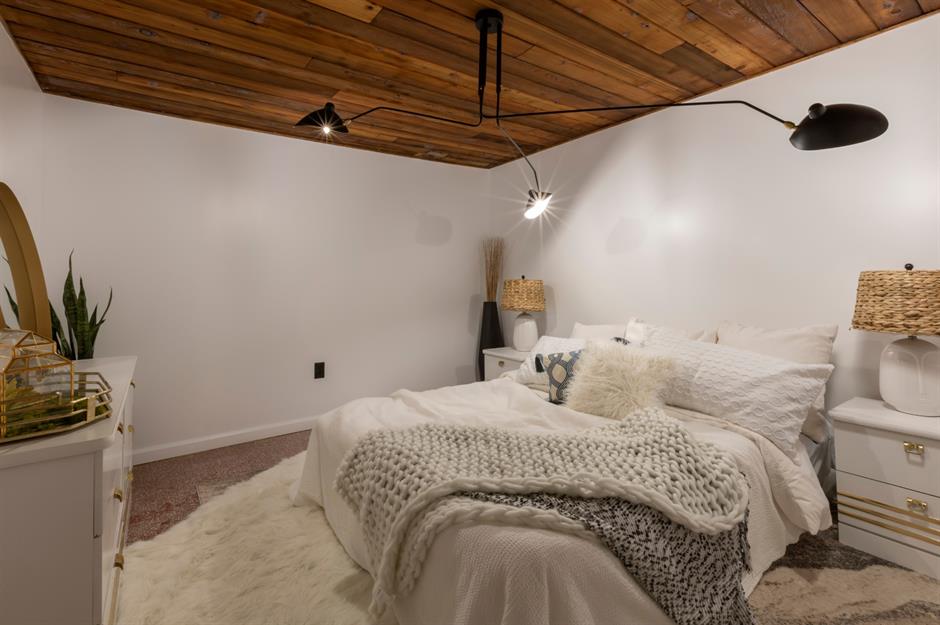
In the master bedroom, the classic wooden ceiling remains the focal point, now complemented by fresh white walls and serene neutral decor. Rustic woven wicker lampshades and soft rugs add a touch of warmth, highlighting the organic textures that were dear to McDonald’s heart.
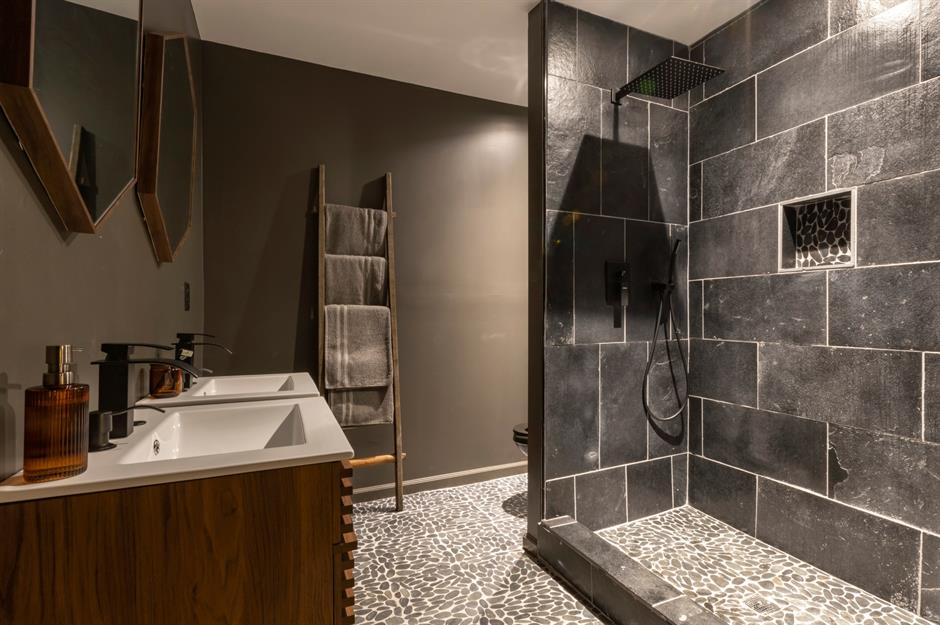
Connected through the sliding doors from the first bedroom, the main bathroom is a haven of relaxation. Featuring twin wooden vanity units, pebble-effect floor tiles, and a spacious stone walk-in shower, it’s a sanctuary that echoes McDonald’s appreciation for natural elements.
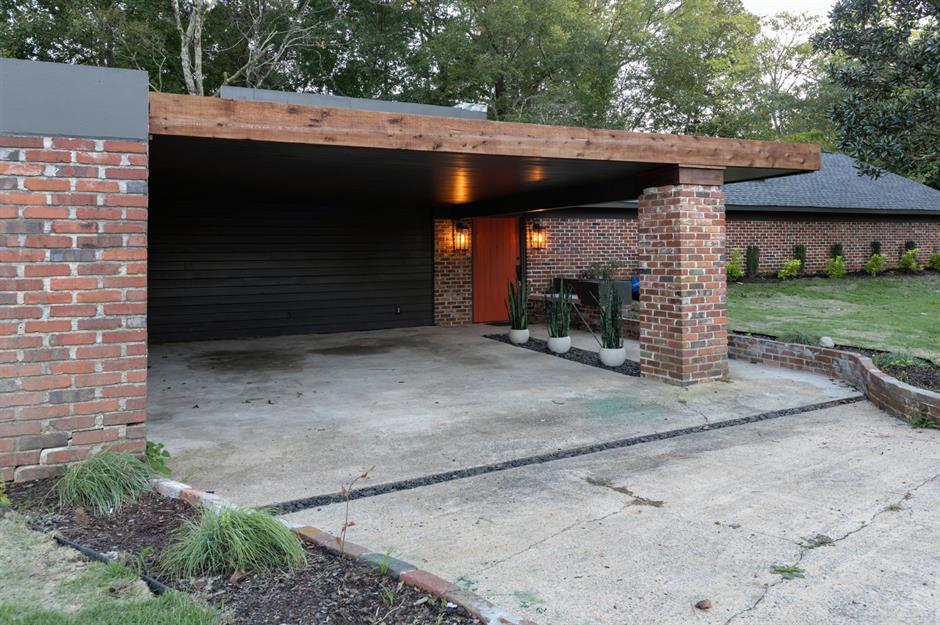
True to the original design, two parking spaces still grace the front of the property, though you won’t find the Chevrolet hiding beneath the leaves anymore, unfortunately. And the inground pool, once overgrown, is now a pristine lawn, ready for enjoyment.

Following its remarkable transformation, the house was listed and quickly sold for $225,000 (£178k). When Leland Kent returned to capture its rebirth in September 2021, it was nearly ready for its new inhabitants to move in. It’s no wonder the property hasn’t changed hands since – surely, the current homeowners cherish this transformed gem.
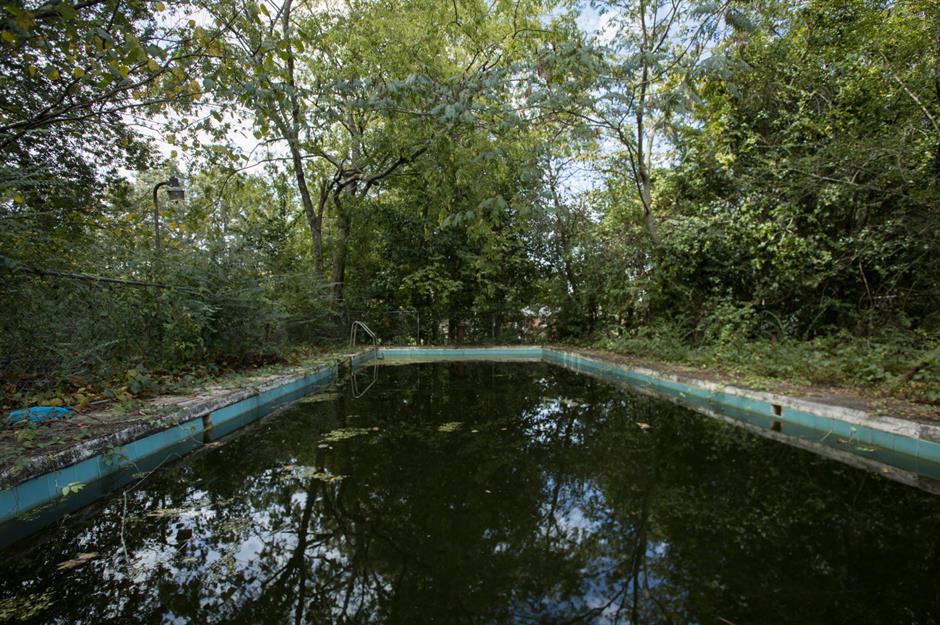
If you found this story intriguing, you might want to explore more of Leland Kent‘s photography. His portfolio captures and preserves forgotten places, offering a glimpse into the past for future generations to appreciate. From abandoned buildings to hidden gems, Kent’s work evokes a sense of nostalgia and curiosity about the history of these places. Take a journey through his lens and uncover the stories hidden within each photograph.
RECOMMENDED: Abandoned American Homes You Can Buy